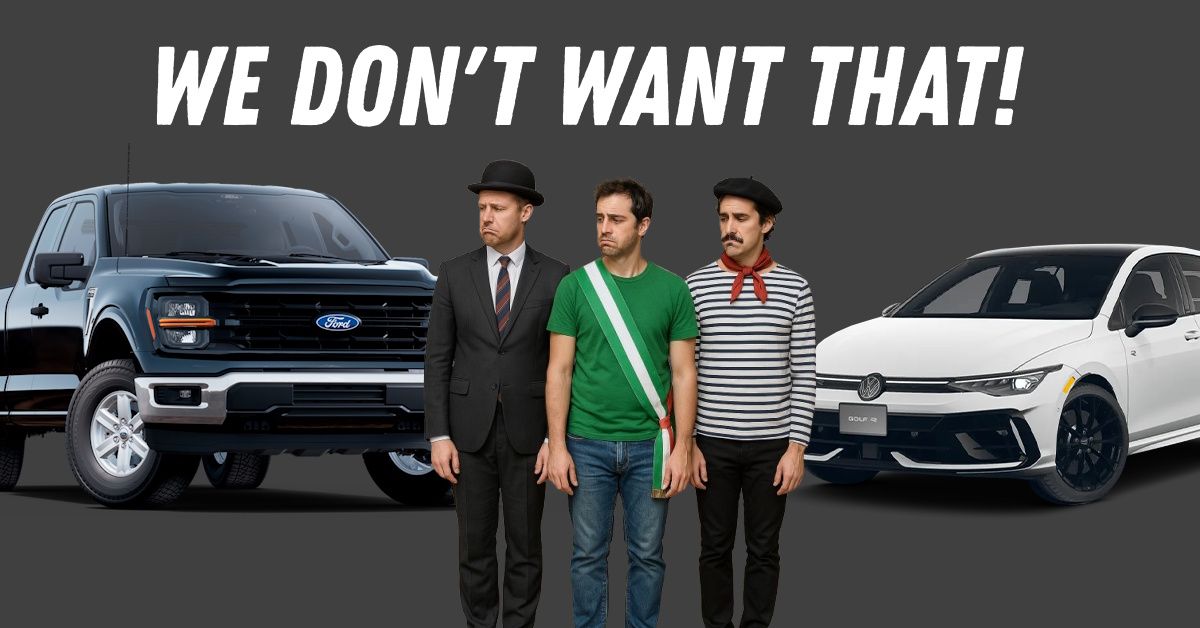Why Europeans Don't Buy American Cars!


Walk down any street in Paris, Berlin, or Rome, and you’ll notice a certain harmony in the traffic—compact hatchbacks tucked neatly into impossibly small parking spots, scooters weaving through cobblestones, and wagons zipping down narrow lanes with the kind of agility that would terrify a full-size SUV. One thing you’re unlikely to see? An American car.
For decades, American brands have struggled to make a dent in Europe’s auto market. Despite the global reach of Hollywood and Coca-Cola, Detroit's finest remain strangers on European soil. The reasons go far beyond simple brand preference—they lie in a deeper cultural disconnect, a history of strategic misfires, and a rapidly evolving market that has left American automakers playing catch-up.
In the United States, the Ford F-150 is a best-seller, practically a symbol of freedom and utility. In Europe, it’s more likely to be a punchline. Picture trying to navigate a medieval alleyway in Siena or squeezing into a Zurich underground parking bay built when the VW Golf was considered large. That’s where the trouble begins.
Even mid-sized American sedans feel bloated on European roads. A Chrysler 300C might glide comfortably along Route 66, but it feels awkward and out of place in the congested lanes of Brussels. Size isn’t just inconvenient—it’s a daily hassle.
Then there's fuel. With petrol prices hovering around double what Americans pay—and emissions taxes adding insult to injury—owning a gas-guzzling V8 is more burden than brag. While Americans may adore their muscle cars and full-size trucks, Europeans have long preferred cars that sip rather than chug. Models like the Toyota Yaris Hybrid or the diesel-powered Peugeot 208 make far more sense for a continent obsessed with efficiency and environmental consciousness.
And it’s not just about what you drive—it’s how you drive. European roads twist and turn, particularly in countries like Italy or Switzerland. Cars are expected to corner with precision and brake with immediacy. This is the land of the Nürburgring and Monte Carlo, after all. Comfort-oriented American cruisers built for long, straight highways just don’t feel as connected to the road.
American car companies didn’t just miss the mark—they missed the whole dartboard. Instead of reimagining cars for European tastes, they often tried to transplant models straight from the U.S., or worse, dressed up budget cars and hoped for the best.
Take GM’s ill-fated attempt to sell Daewoo rebadges as Chevrolets. Europeans saw through the façade. These cars felt cheap, lacked refinement, and came with none of the brand prestige that Chevy enjoyed back home. It was like showing up to a Paris fashion show in a polyester suit—technically clothed, but painfully off the mark.
Chrysler’s efforts weren’t much better. Cars like the Sebring and the Dodge Nitro left buyers unimpressed with their clunky interiors and dated styling. Even when they tried to play the practicality card with the Voyager minivan, European buyers gravitated toward sleeker, more versatile rivals like the Ford S-Max.
Ironically, it was Ford—a fellow American brand—that showed the right way to win European hearts. By giving its European division autonomy, Ford created hits like the Fiesta and Focus: sharp, efficient, and tuned for the local palate. Their success stood in stark contrast to the missteps of their Detroit cousins.
If the cultural gap wasn’t enough, the competition didn’t do American brands any favors. European buyers are spoiled for choice—and quality.
Volkswagen, Renault, and Peugeot build cars that feel made for the streets they inhabit. The VW Golf isn’t just Europe’s best-seller—it’s a cultural icon, as likely to be found in a French village as on a German autobahn. These brands offer not just options, but a sense of identity.
Asian automakers also understood the assignment. Toyota’s hybrids are legends of reliability, and Honda’s Civic has quietly become a favorite for those wanting bulletproof performance with a touch of flair. Meanwhile, Korean brands like Hyundai and Kia are redefining value—offering premium features at affordable prices. Their EVs, like the Kia EV3, show that they're not just catching up—they’re overtaking.
And now, a new challenger has entered the ring: China. Brands like BYD and MG (rebranded under Chinese ownership) are making waves with stylish, affordable EVs that feel tailor-made for Europe’s green ambitions.
Europe has embraced the electric future with a speed and seriousness few saw coming. In cities like Oslo and Amsterdam, electric charging points outnumber petrol stations. Entire neighborhoods have banned fossil fuel cars. It’s not a trend—it’s policy.
Volkswagen, Volvo, and Tesla lead the way. Battery-electric vehicles now make up a significant chunk of new car sales. Meanwhile, GM and Chrysler are still trying to get their electric game off the ground. GM’s Ultium platform is promising, but painfully late. Chrysler’s lineup is sparse and uninspiring, with few models that speak to European sensibilities—small, sleek, efficient.
Safety is another sore spot. While European buyers pore over Euro NCAP crash ratings and demand advanced driver-assistance features, many American imports lag behind or aren't even tested under the same standards. In a market where Volvo has made safety its brand DNA, that's a hard pill to swallow.
Beyond the tangible problems lies a branding issue. What is a Chevrolet in Europe? A budget brand? A muscle car legend? A lifestyle SUV maker? Nobody really knows. Cadillac tried to sell itself as a luxury option, but next to the poise of a Mercedes E-Class or the tech-laden Audi A6, it looked like an outsider wearing someone else’s tuxedo.
And then there’s the baggage. European buyers haven’t forgotten stories of dodgy gearboxes, plastic interiors, or disappointing reliability. American cars still carry the scars of old reputations—and rebuilding trust across oceans is no easy task.
So, there you have it. Europeans don’t buy American cars because they make no sense to them. And Trump’s tariffs aren’t going to change that reality.